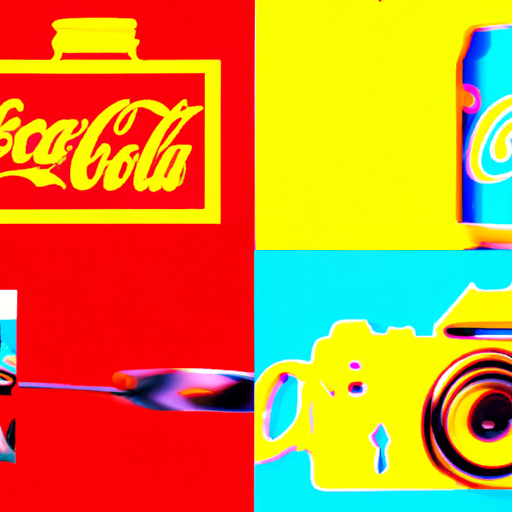
-
Table of Contents
Exploring the Concept of Kinetic Branding in Graphic Design

In the world of graphic design, branding plays a crucial role in creating a strong and memorable identity for a company or product. Traditional branding focuses on static elements such as logos, colors, and typography. However, in recent years, a new concept called kinetic branding has emerged, revolutionizing the way brands interact with their audience. This article will delve into the concept of kinetic branding, its importance in graphic design, and how it can be effectively implemented to create engaging and dynamic brand experiences.
What is Kinetic Branding?
Kinetic branding is a design approach that incorporates movement and interactivity into brand elements. It goes beyond static visuals and aims to create dynamic experiences that captivate and engage the audience. By leveraging animation, video, and interactive elements, kinetic branding brings brands to life, making them more memorable and impactful.
Unlike traditional branding, which relies on static logos and visuals, kinetic branding allows brands to tell stories, convey emotions, and create immersive experiences. It adds a new dimension to brand communication, enabling brands to connect with their audience on a deeper level.
The Importance of Kinetic Branding in Graphic Design
Kinetic branding offers several benefits that make it an essential aspect of modern graphic design:
- Enhanced Brand Recognition: Kinetic branding helps brands stand out in a crowded marketplace by creating unique and memorable experiences. By incorporating movement and interactivity, brands can leave a lasting impression on their audience.
- Increased Engagement: Dynamic and interactive brand experiences capture the attention of consumers and encourage them to interact with the brand. This increased engagement leads to better brand recall and customer loyalty.
- Storytelling Opportunities: Kinetic branding allows brands to tell stories and convey their values and messages in a more compelling way. By using animation and video, brands can create narratives that resonate with their target audience.
- Adaptability: In today’s digital age, where content is consumed across various platforms and devices, kinetic branding offers adaptability. Brands can create experiences that work seamlessly across different mediums, including websites, social media, and mobile applications.
Successful Examples of Kinetic Branding
Several brands have successfully implemented kinetic branding to create memorable experiences for their audience. Let’s explore a few notable examples:
Google is known for its ever-changing logo, which often incorporates interactive elements to celebrate special occasions or events. For example, during the Olympics, Google created a series of animated doodles that allowed users to play mini-games directly on the search engine’s homepage. This dynamic approach to branding not only showcases Google’s creativity but also engages users in a fun and interactive way.
Netflix
Netflix is a prime example of a brand that leverages kinetic branding to enhance its user experience. The streaming platform’s iconic logo animates when users launch the app, creating a sense of anticipation and excitement. Additionally, Netflix’s personalized recommendations and interactive features, such as the “Continue Watching” feature, keep users engaged and immersed in the platform.
Nike
Nike is renowned for its innovative approach to branding, and kinetic branding is no exception. The brand often incorporates motion and interactivity in its advertisements and digital experiences. For example, Nike’s “Choose Go” campaign featured an interactive billboard that encouraged passersby to run on a treadmill, triggering a virtual race against a digital avatar. This immersive experience not only promoted Nike’s products but also encouraged physical activity and engagement.
Implementing Kinetic Branding Effectively
While kinetic branding offers exciting possibilities, it is essential to implement it effectively to achieve the desired impact. Here are some key considerations:
- Consistency: Ensure that the kinetic elements align with the brand’s overall identity and messaging. Consistency is crucial to maintain brand recognition and avoid confusion.
- User Experience: Prioritize user experience when incorporating kinetic elements. They should enhance the overall experience rather than distract or confuse the audience.
- Platform Compatibility: Consider the platforms and devices where the brand will be experienced. Kinetic branding should be adaptable and work seamlessly across different mediums.
- Storytelling: Leverage kinetic branding to tell compelling stories that resonate with the target audience. Use animation and interactivity to evoke emotions and create memorable experiences.
Conclusion
Kinetic branding is a powerful concept that has transformed the world of graphic design. By incorporating movement, interactivity, and storytelling, brands can create dynamic experiences that captivate and engage their audience. The importance of kinetic branding lies in its ability to enhance brand recognition, increase engagement, and provide adaptability in a digital landscape. Successful examples from brands like Google, Netflix, and Nike demonstrate the effectiveness of kinetic branding when implemented thoughtfully. As graphic designers and marketers, embracing kinetic branding can unlock new possibilities for creating impactful and memorable brand experiences.
